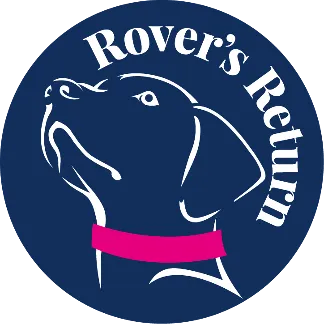Book a FREE 1:1 Assessment Call By Clicking HERE
Specialising In Dog Reactive Behviour
Accredited by APDT, ABTC and UK DOG Behaviour and Training Charter
Qualified and Experienced
Force Free Trainer and Behaviourist
Dog Training Leicestershire Educational Blogs

Help! My Dog is Reactive
Help! Why is my dog reactive?
You may have noticed concerning behaviours from your dog: have they become reactive, it could be reactive in general, or to a specific trigger or event.
Whether the dog is reacting aggressively towards dogs, people, or noises, or something that you can’t see, it can be worrying and frustrating.
So, what's the deal? How did this reactivity develop? Let's dive in and explore the possible reasons behind your dog's reactive behaviour.
I don’t like the term ‘reactive’ because dog reactivity is misunderstood.
But it is a term that people recognise, so Im stuck with it.
What is reactivity?
Reactions occur all the time in all of us.
Think about how you react when you feel happy. Your reactions are likely to be smiling or laughing. Happiness is an emotion.
But if you are feeling sad or angry, your behaviour will be quite different, you won’t be smiling, you might frown, shout or cry.
These are perfectly natural reactions
But dogs don’t have a brain as advanced as ours and their emotions affect them differently. Their capacity to transfer emotions as feelings is non-existent.
Their brain drives behaviours that work for them in relation to their emotions.
When happy they may jump up, wag their tails and even bark!
But when unhappy, angry or threatened, you may see stillness, barking and lunging, tail down, ears back.
The term reactivity relates to adverse reactions towards triggers.
Why is my dog reactive?
There are many reasons why a dog develops adverse behaviours.
There is always a reason. Dogs never act ‘just because’. Each and every behaviour has a linked emotion. Behaviour is communication and each behaviour is there because it works for the dog. That part seems simple right?
It can be simple, it can be complicated. Each and every dog's behaviour is individual to them and the brain triggers a response and when that works for the dog, the same response is adapted each time they are faced with a similar situation.
With a behavioural assessment looking at the function of the behaviour, we can identify why and put a plan into place to help them cope which will, in time reduce reactivity.
A great way to think of it is pessimism.
An animal's ultimate goal is survival. The brain kick-starts physiological responses when faced with threatening situations. This is instinctual and not chosen, it’s a reflex response.
It pays to be pessimistic about unfamiliar situations as you are more likely to survive. A deer in the Serengeti that ignores a rustling bush is likely to be eaten.
Some dogs are naturally more pessimistic than others. Pessimism drives fear responses. Pessimism can stop dogs from exploring, sniffing, and making decisions in general.
A level of pessimism is good, but when it prevents the dog from doing things then it can hinder their lives.
I was doing a behaviour consultation the other day and the owner said she didn’t think the dog was fearful or pessimistic overall. I added a leg weave to the behaviour plan, as the owner and dog enjoyed the training, and this exercise will increase flexibility and grit. But when we began training it was clear that pessimism is preventing the dog from learning the exercise. This exercise when taught correctly will increase optimism, and it showed us the level of the dog's pessimism.

Here are some reasons why reactive behaviours develop in dogs. They are not in any particular order.
1. Lack of Socialisation in the early years, but also not keeping up with socialisation throughout the dog's life.
A lack of or poor socialisation during their critical development period when puppies and beyond (socialisation is a lifelong requirement) can increase reactivity in dogs because to dogs an unfamiliar world is big and scary and full of things that are threatening and may harm them (natural pessimism). When exposed to stimuli that they have no experience of it is terrifying. Imagine being taken away from everything you know and plonked into an environment where these huge scary monsters make unfamiliar noises, move differently and smell weird! Anyone would be scared.
If your dog hasn't had positive experiences with various people, animals, and environments at a young age, they may feel anxious or threatened in new situations, leading to a reactive response. So, if you got your canine companion later in life or slacked off on exposing them to new things, this could be a contributing factor.
Link this to the survival instinct and it's easy to see how adverse behaviours when threatened become an everyday occurrence.
To us it's just a car, to a dog, it's a massive monster that moves fast and makes a lot of noise, and it's coming toward me and I'm on a lead and can’t get away! Helllllp (bark bark bark)
2. Traumatic Experiences
Just like humans, dogs can be deeply affected by traumatic events Even ones we don’t think are traumatic, but the dog has been traumatised, it could be a dog running to a gate barking when you are walking. So next time the dog walks past the gate it may react in response to that dog's behaviour.
If your pup had a negative experience with another dog or was involved in an incident that frightened them, they may become reactive as the brain stores emotional triggers and behaviours to help the dog cope with the situation and feel safe.
These experiences can be challenging to address, but it's crucial to understand that reactive behavior stems from fear or past trauma, rather than a desire to be aggressive. The dog is communicating that they feel threatened and cannot cope.
3. Fear, Anxiety and Pessimism
Pessimism, leading to Fear and anxiety are significant factors that can lead to reactivity in dogs. Some dogs are naturally pessimistic and more anxious or fearful, while others develop these emotions due to negative experiences or a lack of confidence.
When faced with a trigger, whether it's a loud noise or an unfamiliar person, a reactive dog may lunge, bark, or show other signs of aggression as a way to protect themselves. Remember, they're just scared, and they're trying to feel safe in the best way they know how.
4. Frustration and Lack of Control
Frustrated behaviours can lead to reactive behaviours due to increased arousal levels. When continually frustrated the behaviour can lead to fear due to the physiological response that occurs during the behaviour, leading to reactive behaviour.
5. Genetic Predisposition
You may read that certain breeds are predisposed to fear and aggression, but this isn’t necessarily correct many factors contribute including early experiences, learning history etc. It’s unlikely that breed alone will determine reactivity.
Pre-natal stress - Bitches when pregnant can pass information to their unborn pups when they have a traumatic experience as a means of protection. https://www.whole-dog-journal.com/puppies/puppy-health/how-a-mothers-stress-can-influence-unborn-puppies/
Although I am always conscious of breed when carrying out an assessment, breed alone is unlikely to be the sole reason for the behaviour.
6. Prior learning experience
Dogs don’t learn when in a state of reaction, so when these behaviours occur it is a different part of the brain that stores responses that keep the dog safe, so in similar situations, that part of the brain, bypasses the thinking part of the brain to drive reactions. This is the fight and flight response. Some dogs will choose to run away if given the opportunity, this is why lead reactivity can be an issue as this takes the option away from the dog. The ‘fight’ response does not mean that your dog wants to fight with the trigger, there are several natural responses in fight or flight mode. Freeze, flirt and faint are also common responses when stressed. Flirt is often misunderstood as your dog inviting play but when this happens it can quickly escalate into more aggressive type behaviours and fights.
When exposed to triggers that cause adverse reactions and the dog is unharmed the emotional brain stores that response as a success. This behaviour will be adapted in the same or a similar situation as it worked. It can be tempting to shout at your dog or try to stop them, but this should be avoided, it won’t work, and the dog needs to behave in some way to cope. The best way to manage this is where possible avoid triggers and give as much space as the dog needs.
9. Pain and medical issues (often undiagnosed or recognised)
How do you feel when you are poorly? Not great. Dogs cannot communicate with us when they feel ill or are in pain. This means that it often goes unnoticed.
A friend's dog bit their nephew. Totally out of character for the dog. A vet check was carried out and nothing was found. The dog, unfortunately, did it again, and they contemplated euthanasia as they were scared for their family, this sudden onset of aggression became a family problem. Another vet check was done and they found that there was a nasty infection in her mouth and after treatment, she was her usual happy self and not another bite attempted!
A lady called me desperate for help after her dog had bitten her and she needed treatment. After speaking with her and finding out the information, I advised her to go and get a vet check for the dog. I did not advise her to have a behavioural assessment. She rang me back a week later and had a broken bone and must have been in a lot of pain. It is likely that once painkillers were given and the bone mended there would be no more aggression shown.
Itching and gut issues are also common causes of reactive behaviour, separation behaviours and guarding issues.
It is essential to have a vet check if your dog develops adverse behaviours to rule out medical issues and pain.
Remember, reactive behaviour is not a character flaw in your beloved canine companion. It's simply their way of dealing with their emotions and fear. Understanding the reasons behind their reactivity is the first step towards helping them overcome it. With patience, training, and professional guidance, you can help your dog become more confident and comfortable in various situations, leading to a happier and more peaceful life for both of you.
Rovers Return specialises in fear, anxiety and reactive behaviours including separation issues and guarding. Our programs are bespoke and designed for ease and simplicity for you to put the training at home.
Please understand that these behaviours take time and patience to reduce. There may be a need for a long-term program.
I have a dog that is pessimistic when in the presence of other dogs. I have worked hard for him to be able to walk past dogs without reacting, as he often can say hello to other dogs, but I am always looking at how he communicates and will keep him safe when he is feeling vulnerable.
It can be done with time, understanding and patience

Highly Qualified Behaviourist
Accredited by APDT, ABTC and UK DOG Behaviour and Training Charter
Accredited Scentwork Instructor
Force Free Trainer and Behaviour
Force Free Trainer and Behaviour
Accredited Scentwork Instructor
Accredited by APDT, ABTC and UK DOG Behaviour and Training Charter
Highly Qualified Behaviourist
Contact Us
Sam: 07725 802995
You can contact us via Live Chat button at the bottom of the screen or the contact box to the right.
You can also book one of our services online using the View Dates buttons under the service you require.
© 2023 by Rovers Return Dog Trainers Academy - Force Free Dog Training Lutterworth, Broughton Astley, Leicestershire, Hinckley, Nuneaton, Stoney Stanton, South Kilworth, Ullesthorpe
Privacy Policy | Terms and Conditions | Terms and Conditions of Services | Sitemap


Facebook
Instagram
X
LinkedIn
Youtube
TikTok